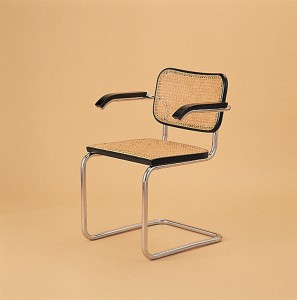The Bauhaus at 100
Monday, April 1st, 2019April 1, 2019
Today, April 1, marks 100 years since the founding of the influential school of design called the Bauhaus. The school was started in Weimar, Germany, in 1919 by the architect Walter Gropius. Formally called the Staatliches Bauhaus (State School of Building), the school had tremendous influence on modern art and design. The Bauhaus had a relatively short existence, however. The Nazi German government forced the school to close in 1933.

The Bauhaus was an important school of design founded by the German architect Walter Gropius 100 years ago on April 1, 1919. Credit: © Claudio Divizia, iStockphoto
The Bauhaus connected creative design with modern industry and science. Despite its name, the school did not initially offer courses in building (architecture). The school’s main emphasis was on applied arts (design and decoration of ordinary objects intended for use), and students were also instructed on painting and sculpture. Architecture, graphic design, and other arts were later included in the curriculum. The Bauhaus often trained artists as craftworkers or industrial designers, and the school stressed the importance of simple but aesthetically pleasing designs in all fields. The school’s influence is still widely seen in many aspects of modern design. Bauhaus teachers included such famous artists as Josef Albers, Lyonel Feininger, Paul Klee, and Wassily Kandinsky.

This chair, designed by the German architect and Bauhaus instructor Marcel Breuer in 1928, exemplifies the simple yet elegant applied arts taught at the school. Credit: Knoll International
The Bauhaus also pioneered in a new kind of art education. The students began their studies with a basic design course in which they learned principles of composition and color, and how to work with different materials. Similar courses have been adopted by art schools throughout the world. In 1925, the Bauhaus moved to Dessau because of government hostility in Weimar. The school was closed by the Nazis in 1932. It tried to reopen in Berlin, but was forced to close permanently in 1933.
In 1937, former Bauhaus teacher László Moholy-Nagy started a similar school of design in Chicago in the United States. This “New Bauhaus” continued the traditions of the original school. In 1944, the school was renamed the Institute of Design, and it became part of the Illinois Institute of Technology in 1949.


